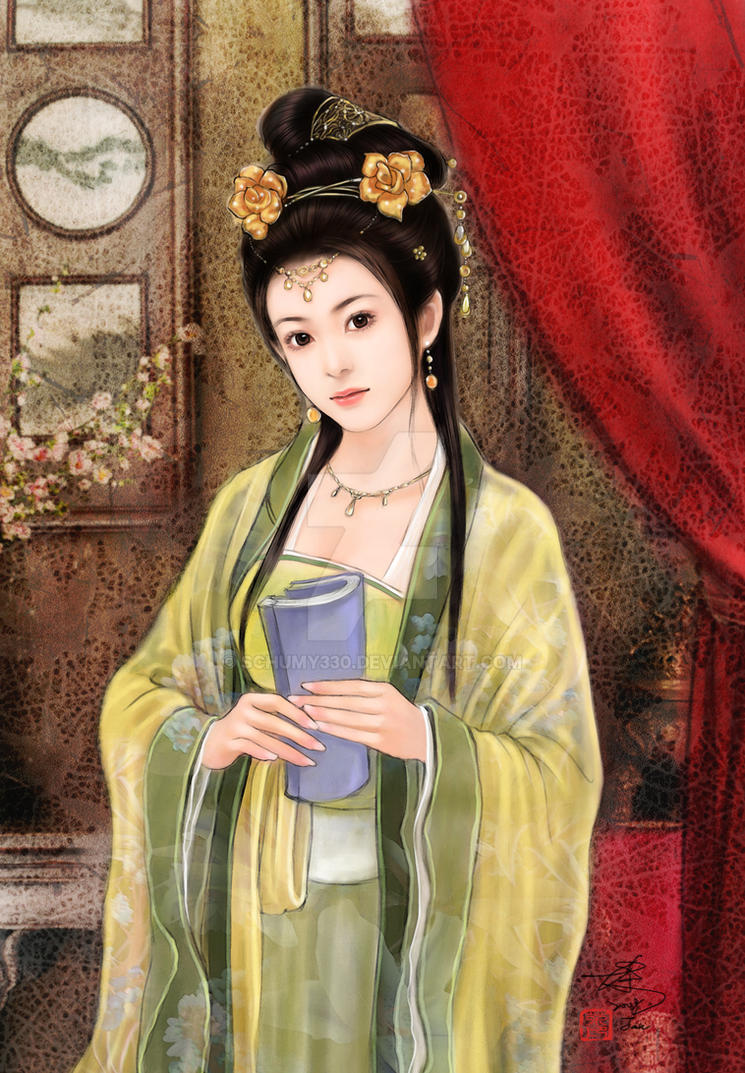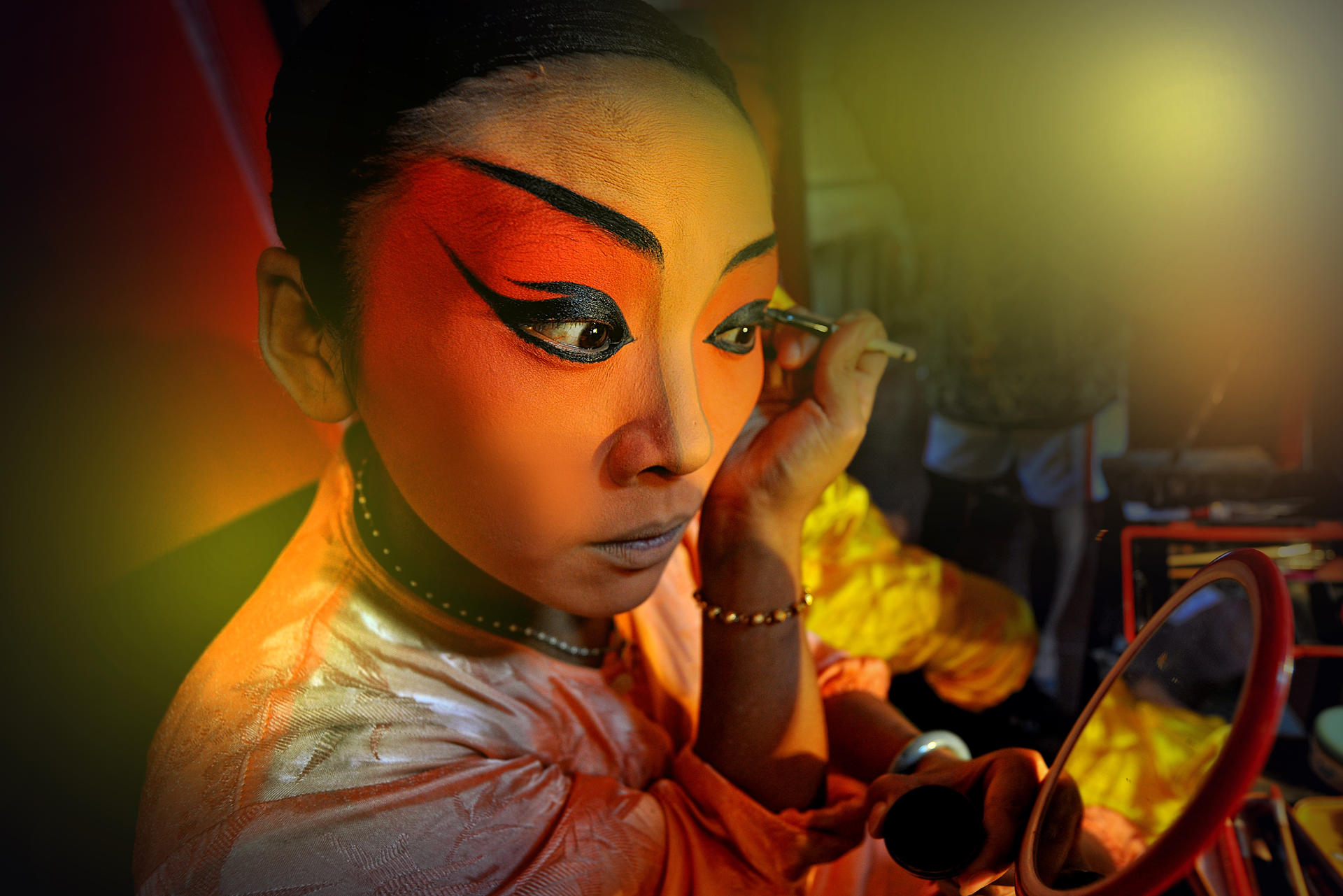
princess of Tang Dynasty by schumy330 on DeviantArt
Ancient China produced what has become the oldest extant culture in the world. The name 'China' comes from the Sanskrit Cina (derived from the name of the Chinese Qin Dynasty, pronounced 'Chin') which was translated as 'Cin' by the Persians and seems to have become popularized through trade along the Silk Road.. The Romans and the Greeks knew the country as 'Seres', "the land where silk.

Ancient Chinese Princess Clothing and Hair Accessories Complete Set for Adults or Children
May 7, 2020 March 13, 2023 Nyamachi Table of Contents Introduction Imperial Palace Previous Generation Ruling & Future Generations Male Members of the Royal Family Female Members of the Royal Family Inner Palace/Imperial Harem (后宫 hòugóng) Tier 1: Empress Tier 2: Consorts Tier 3: Concubines Daughters of the Emperor

New Luxury Vintage Costume Ancient Chinese Princess Empress Hair Cap Wedding Hair Accessory
Emperor Also known as Tianzi, "The Son of Heaven " the Chinese emperor wielded varying degrees of power between different emperors and different dynasties, with some emperors being absolute rulers and others being figureheads with actual power in the hands of court factions, eunuchs, the bureaucracy or noble families.

Hanfu Princess Hanfu, Hanfu princess, Ancient chinese clothing
The 10 Most Famous Chinese Empresses Often called by Chinese scholars as "secondary monarchs," many empresses played significant roles (good or bad) in different dynasties and affect the course of Chinese history. Here is a list of ten of the most famous empresses in Chinese history. 1. Empress Lv Zhi 吕雉 (241 BC - 180 BC)

Traditional Chinese Tang Dynasty Princess Wedding Red Clothing, China Ancient Palac… Ancient
The history of Mulan The story of Hua Mulan first appears in the Ballad of Mulan, an ancient Chinese folksong likely composed around the 4th century during the Northern Wei dynasty. The legend takes place as the "Khagan" or Emperor is mobilizing an army to invade parts of Northern China.

Tang Dynasty Tailed Princess Costume Ancient Chinese Princess Costume for Little Girl
He agreed to the marriage alliance and made Princess Wencheng King Songtsen Gampo's bride. In 641 C.E., Princess Wencheng left the capital of Chang'an and journeyed to Lhasa to become Tibet's Queen. [9] Before she left, Emperor Taizong instructed her in the role she was to play as Queen of Tibet. [10] She was to bring China's culture.

Women Fairy Ancient Princess Hanfu Chinese Folk Dance Traditional Costume Chiffon Dress S/M/L/XL
Archaeology Ancient princesses helped build vast warrior empire that prompted China to erect the Great Wall News By Tom Metcalfe published 20 April 2023 Analysis of ancient DNA and grave.

Traditional Ancient Chinese Princess Costume and Headpiece Complete Set, Princess Agents Chinese
By AD316, the whole of northern China was occupied by non-Han peoples and China remained divided for the next three centuries. Another princely spat was the Xuanwu Gate Incident, in AD626, when.

Chinese Ancient Princess Hair Crown Long Tassels Flower Branch Vinatage Chinese Women Headwear
. Introduction For centuries, Chinese history has been shaped by the presence of princesses. In antiquity, these women were referred to as huanghou or wangfei - the daughter of a reigning emperor was given the title huanghou, while wangfei was used to describe the daughter of a nobleman or prince.

งานศิลปะคนจีนโบราณ ผู้หญิงสวย, เจ้าหญิง, ความงามวิดีโอเกม Digital CG ภาพประกอบสต็อก 514171918
Ancient Chinese princesses (3 P) F Five Dynasties and Ten Kingdoms princesses (2 P) M Ming dynasty princesses (6 P) Q Qing dynasty princesses (18 P) T Tang dynasty princesses (12 P) Pages in category "Chinese princesses" The following 21 pages are in this category, out of 21 total. This list may not reflect recent changes . B

So Not A Princess Journal Hair ornaments, Chinese art, Asian art
Those ancient oracle bone inscriptions and over 3000-year-old cultural relics buried with her are telling the world the story of this glorious marshal, queen, and priestess. Unearthed Jade Objects from Tomb of Fu Hao — National Museum of China (Photo by Dongmaiying)

ANCIENT CHINESE PRINCESS
Wencheng (c. 620-680)Chinese princess of the Tang Dynasty who married the first king of Tibet and founded the Jokhang Temple in Lhasa, making her instrumental in establishing Buddhism as the national religion of Tibet. Name variations: WenCheng. Pronunciation: WHEN-chin. Source for information on Wencheng (c. 620-680): Women in World History: A Biographical Encyclopedia dictionary.

Ancient Chinese Princess Clothing and Headpiece Chinese princess, Princess outfits, Chinese
Princess Wencheng Princess Wencheng ( Chinese: 文成公主; pinyin: Wénchéng Gōngzhǔ; Tibetan: མུན་ཆང་ཀོང་ཅོ, Wylie: mun chang kong co [4]) was a member of a minor branch of the royal clan of the Tang dynasty who married King Songtsen Gampo of the Tibetan Empire in 641. [2] [5] She is also known by the name Gyasa or "Chinese wife" in Tibet. [6]

Ancient Chinese Princess by Shawli's Fantasy Illustration 2D CGSociety Asian fantasy art
Wuhou (born 624 ce, Wenshui [now in Shanxi province], China—died December 16, 705, Luoyang) posthumous name (shi) of the woman who rose from concubinage to become empress of China during the Tang dynasty (618-907). She ruled effectively for many years, the last 15 (690-705) in her own name. During her reign, Tang rule was consolidated, and the empire was unified.

Traditional Gowns, Traditional Chinese Dress, Traditional Style, Concept Clothing, Beautiful
Pages in category "Ancient Chinese princesses" The following 3 pages are in this category, out of 3 total. This list may not reflect recent changes. M. Duchess Mu of Xu; W. Wen Jiang; X. Xiao Chen Tao This page was last edited on 14 January 2019, at 00:17 (UTC). Text is available under the Creative.

Ancient China Princess by SAMLIM on DeviantArt
The Zhou Dynasty was the longest-lasting dynasty in Chinese history. It persisted all the way from the 11th to the 3rd century BC. The rulers of this epoch were no strangers to battle, but they also created an environment where fascinating and long-standing cultural elements thrived. The Zhou Dynasty succeeded the Shang Dynasty.